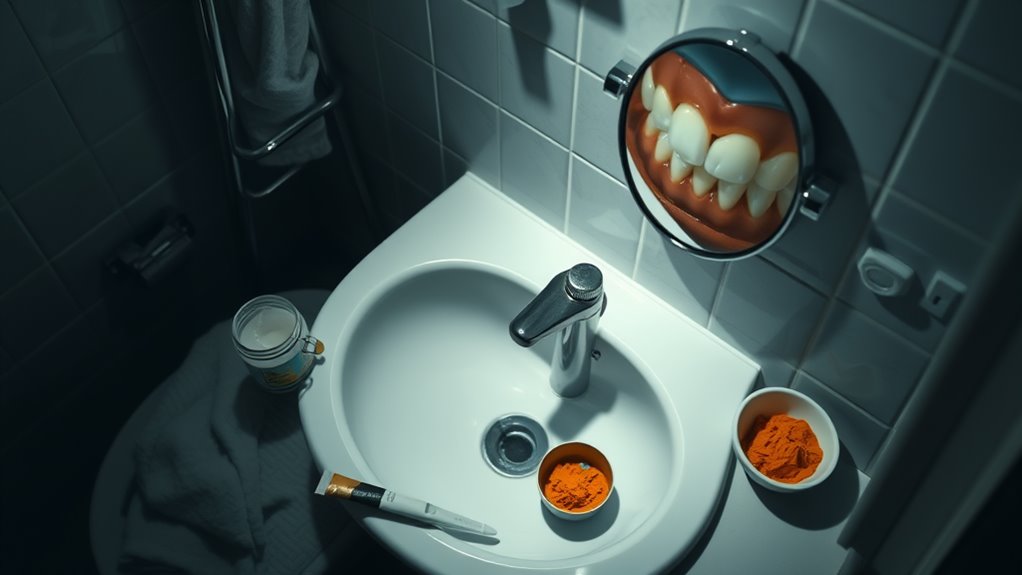Ice or Heat. The Best Way to Treat a Toothache at Home!
When a toothache strikes, you might wonder whether to reach for ice or heat for relief. Each method has its advantages, but understanding their differences is key to finding the best solution for your pain. Are you dealing with sharp, acute discomfort, or is it a dull, persistent ache? The answer could guide you toward the right choice. Let’s explore how these therapies work and which might suit your situation best.
Understanding Toothaches: Common Causes and Symptoms
Toothaches can strike unexpectedly, making everyday tasks feel unbearable. You might find yourself wincing at the slightest touch or craving relief that seems out of reach. Common causes include cavities, gum disease, or even a cracked tooth. Each of these issues can trigger pain that radiates through your jaw, making it hard to focus on anything else.
You’re not alone in this experience, and there are toothache home remedies you can try to ease your discomfort. Rinsing with warm saltwater can help reduce inflammation and cleanse your mouth. Applying a cold compress can numb the pain and provide temporary relief. Clove oil is another popular remedy, known for its natural analgesic properties. Ignoring tooth pain can lead to serious infections that may escalate and require extensive treatment.
These simple solutions can make a difference while you await professional care. Remember, taking action now can help you regain your comfort and joy in everyday life.
The Science Behind Ice Therapy for Tooth Pain
Although you mightn’t think of ice as a remedy for tooth pain, its effectiveness lies in the science of cold therapy. When you apply ice to the affected area, it helps numb the pain and reduce inflammation. This can be a game-changer when you’re dealing with a toothache.
Here’s how ice therapy works:
-
Numbs pain: Cold constricts nerves, reducing the sensation of pain.
-
Reduces swelling: Ice helps minimize inflammation in the affected gums.
-
Decreases blood flow: Cold therapy slows circulation, which can ease throbbing.
-
Offers immediate relief: You can quickly grab ice from your freezer for fast comfort.
-
Promotes relaxation: The cooling effect can soothe overall discomfort and tension.
Using ice isn’t just a quick fix; it’s a proven method that can provide significant relief and make you feel more at ease during a frustrating time.
The Benefits of Heat Therapy for Tooth Discomfort
When you’re struggling with tooth discomfort, heat therapy can be a surprisingly effective remedy. Applying heat helps increase blood flow to the affected area, promoting healing and relaxation. It can soothe the muscles around your jaw, easing that tightness you might feel.
You may find that using a warm compress or a heating pad on low can provide instant relief, making you feel more comfortable in a tough moment. Heat therapy can also help alleviate those nagging pain signals from nerves, allowing you to focus on other things.
Plus, it’s an easy option you can embrace at home, giving you a sense of control over your discomfort. Many people find comfort in the warmth, creating a cozy atmosphere as they deal with their toothache.
How to Apply Ice and Heat Safely
Using heat therapy can be a great way to ease tooth discomfort, but it’s important to know how to apply ice and heat safely to avoid any further irritation or injury.
Here are some practical tips to help you out:
-
Use a cloth: Always wrap ice or heat packs in a cloth to protect your skin.
-
Limit exposure: Apply ice or heat for about 15-20 minutes at a time to prevent skin damage.
-
Check the temperature: Ensure ice is cold but not freezing, and heat isn’t scalding.
-
Alternate applications: You can switch between ice and heat, but give your skin a break in between.
-
Listen to your body: If you feel increased pain or discomfort, stop immediately and consult a professional.
-
Consider cold compresses as an effective method to numb the area and reduce inflammation.
Additional Home Remedies for Toothache Relief
If you’re looking for quick relief from a toothache, several home remedies can help ease your discomfort.
Clove oil is a favorite among many—just dab a cotton ball in it and apply it to the affected area. Its natural numbing properties can provide instant relief. Clove oil’s effectiveness as a natural remedy is well-documented, making it a trusted option for many experiencing dental pain.
Saltwater rinses are another go-to; mix a teaspoon of salt in warm water and swish it around for a few minutes to reduce inflammation and cleanse your mouth.
You might also try garlic, which has antibacterial properties. Crushing a clove and applying it directly to the tooth can help alleviate pain.
Another option is peppermint tea; its soothing effects can calm your nerves.
Lastly, a cold compress on your cheek can minimize swelling and numb the area, giving you some much-needed relief.
When to Seek Professional Dental Help
How can you tell when a toothache requires professional attention? It’s essential to listen to your body. While home remedies can work wonders, some signs signal it’s time to consult a dentist.
Don’t hesitate to reach out if you notice any of the following:
- Persistent pain lasting more than a day
- Swelling or redness in your gums
- Pain that worsens with temperature changes
- A bad taste or odor in your mouth
- Difficulty opening your jaw or swallowing
These symptoms could indicate an underlying issue that needs expert care. Bleeding gums or swollen gums can also be a sign of serious dental problems that require immediate attention.
Remember, you’re not alone in this. Many people face toothaches, and seeking help shows you’re taking charge of your health. Your smile deserves the best, and getting professional support can lead to relief and long-term wellness.
Don’t wait too long—acting promptly can save you from more extensive treatments down the line!




